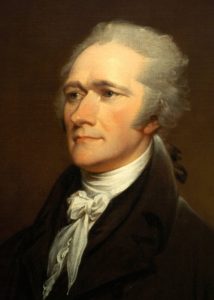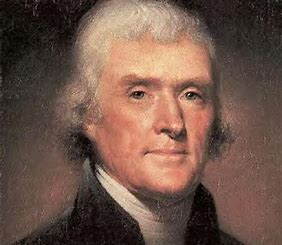By Suzanne Sparrow Watson
As my brother so sadly attested last week, smoke seems to be everywhere in the West this summer. We have cut one vacation short and cancelled another altogether due to smoke. It is a tragedy all around, not only from an environmental perspective but the impact it has on people who lose all of their belongings and the small businesses who count on tourism to subsist. With that in mind, we have just been grateful to have a roof over our heads and Dash the Wonder Dog to keep us entertained. The extra time at home has also aided my mission of slogging my way through Ron Chernow’s tome, Alexander Hamilton, the book that inspired the hit Broadway musical. Weighing in at 832 pages, it has been a daunting task because most of my reading is done in bed at night. Sometimes I’ll read for an hour or so but many nights I find that after three pages I’m slumped over and snoring. That said, I’ve finally completed it and in an odd way, have found some solace in its pages during this politically turbulent time. The following are some highlights from the post-Revolutionary period that seem strikingly familiar:
- During the 1790’s the Federalists and Republicans came to view each other as serious threats to the country’s future, resulting in partisan animosity that was at fever-pitch for much of the decade.
- Partisan warfare divided families in every state. It also broke up friendships, perhaps most notably and poignantly the friendship between the revolutionary collaborators Thomas Jefferson and John Adams.
- Both parties exhibited hostility against recent immigrants who were believed to be supporting the rival party.
- The partisan conflict of the 1790s brought sex scandals to widespread public attention. (Both Hamilton and Jefferson were touched by the latter.)
- Newspapers were established by both parties in order to slant the news to reflect their positions. Ironically, Hamilton, the premier Federalist, founded the New York Daily Post which is now the longest continuously published newspaper in America and is decidedly conservative.
- Large and unruly anti-government crowds gathered in the capital city, and in 1793 “threatened to drag President Washington out of his House, and effect a revolution in the government.
- The election of Thomas Jefferson in 1800 was remarkable for several reasons but most notably that it ushered in the first peaceful transition of power after one of the most acrimonious decades of political backstabbing and infighting.
- In 1813, Jefferson, in retirement, looking back on the 1790s, recalled that the “public discussions” in this decade, “whether relating to men, measures, or opinions, were conducted by the parties with animosity, a bitterness, and an indecency, which had never been exceeded. All the resources of reason, and of wrath, were exhausted by each party in support of its own, and to prostrate the adversary opinions.” Imagine if they had social media back then. Who knows where our country may have drifted?
I avoid most news accounts these days because I find it too stressful. I’ve gone from being a news junkie to eating junk food instead. But reading Hamilton has made me less anxious about today’s conflicts. I realize that as bad as things are right now, we have gone through worse and come out the better for it. Somewhere out there is our Thomas Jefferson. Despite his personal shortcomings, he managed to bring the country together, soothing both parties and accomplishing a sound economic and social foothold for our new country.
All we have to do until “our Jefferson” arrives, is not let the smoke get in our eyes…or blown up our keisters.




